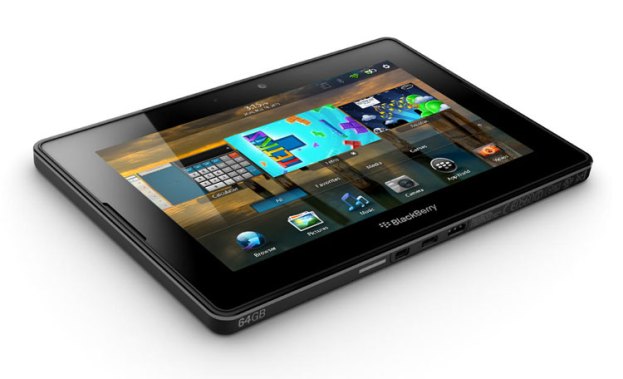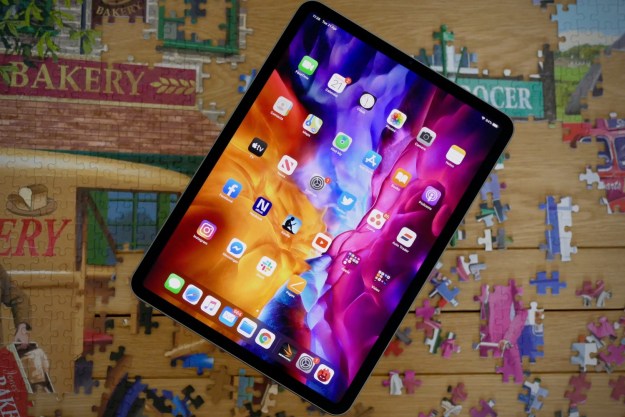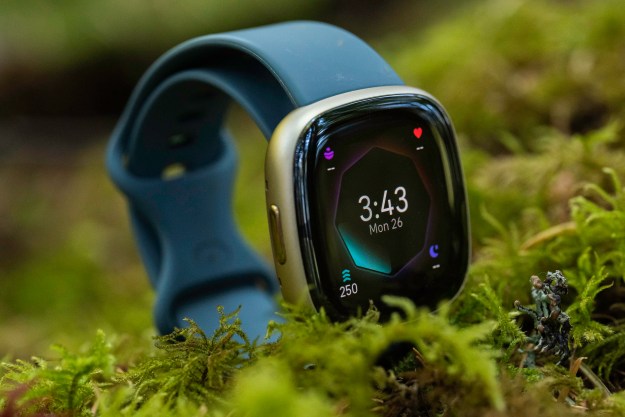
Canada’s Research in Motion launched the its PlayBook tablet with all the swagger of an industry titan, claiming the device would be the first serious rival to the iPad, that both consumers and enterprises would love it, and — of course — that it enabled users to access the “full Internet” thanks to support for Adobe Flash. But things haven’t worked out too well: Earlier this month RIM reluctantly admitted (PDF) it has shipped only 200,000 of the tablets during its second fiscal quarter — roughly half the company’s low-balled estimate it would sell 400,000 tablets during the quarter. So far, a total of about 700,000 PlayBooks have been shipped.
In contrast, Apple sold 9.25 million iPads during its most recent quarter, and (as HP and Samsung know) there can be a big difference between the number of tablets shipped and the number of tablets sold. Adding to RIM’s woes, the company has had to specifically deny reports from Collins Stewart analyst John Vinh that it has cancelled PlayBook production and will be getting out of the tablet market. (RIM has characterized the report as “pure fiction.”) The company has also endured two more high-level execs leaving the company, and Sprint pulling the plug on a 4G version of the PlayBook due to customer disinterest.
And in what may be the most damning development for the PlayBook: the tablets are hitting the bargain bins, with Best Buy, Office Depot, and others slashing $200 off the PlayBook’s price, bringing the cost of a 16GB edition to $299.99, down from its initial cost of $499.99. In the space of a few short months, RIM’s pricing on the PlayBook has shifted from a penny-to-penny competitor with the iPad to a device struggling to meet the $199 price point of the just-announced Kindle Fire.
Does the PlayBook stand a chance? Or should RIM cut its losses while it still can?
Who are the PlayBook’s customers?
RIM’s position in the smartphone market used to be unassailable. For years, millions of government and enterprise users carried BlackBerry phones next to their hearts, addicted to the QWERTY keypads and red lights that almost seemed to whisper you are very important! with every blink. But, like the rest of the industry, RIM was caught flatfooted by the success of the Apple iPhone, then flatfooted again with the success of the Apple iPad. Making matters more complicated has been the success of Android. Where Apple aimed at the chin with high-end devices and an integrated content and app ecosystem, Android swept for the knees, enabling manufacturers and carriers to race to the bottom with low-cost smartphones and tablets, and even launch their own online markets and services. RIM, and its marketshare, were left reeling.
Although RIM had been seeing some success marketing consumer-oriented BlackBerry phones, it’s important to remember the core of the company’s business has always been organizations, corporations, and enterprise — and RIM has a remarkably strong international footprint. RIM has never been a media company peddling music, videos, or games to consumers. Similarly, third-party developers for the BlackBerry have historically focused on the needs of large organizations and enterprises. The BlackBerry ecosystem was built to get potentially confidential and sensitive information to members of an organization quickly and succinctly. It wasn’t built with LOLcats, Facebook, and Angry Birds in mind.
Similarly, when RIM designed the PlayBook, it envisioned the tablet mainly as an adjunct to a BlackBerry phone, and only secondarily as a device that let users do LOLcats, Facebook, Angry Birds, and all that productivity-sapping nonsense. As a result, consumers have embraced the PlayBook with distinct disinterest.
So what went wrong?
The PlayBook’s major failures, unfortunately, impact both RIM’s core enterprise customers and everyday consumers whose expectations have been set by the iPad and (more recently) Android tablets.

Second, RIM’s content and application ecosystem remains remarkably thin. For better or worse, Apple’s iPad has defined what both consumers and businesses expect from a tablet: communications, features, and an excellent touch interface, yes, but also a rich integrated ecosystem of content (music, video, books, and more) and applications. Apple has been peddling digital content via iTunes since 2003, and built a universe of hundreds of thousands of applications before the iPad even launched. In contrast, RIM was starting from scratch on the PlayBook with a brand-new QNX operating system (that didn’t run the handful of existing BlackBerry apps) and no content ecosystem.
RIM has since announced plans to launch a $5-per-month BlackBerry Music Service, but it’s not available yet, outside of a closed beta. RIM has also announced plans to make up the PlayBook’s app deficit via an Android runtime. In theory, the runtime will enable PlayBook tablets to access a myriad of Android applications in addition to their native BlackBerry capabilities. However, recent reports indicate the solution will be incompatible with many Android apps (including those needing Google Maps, SIP, SIP VoIP services, text-to-speech, in-app billing, and cloud messaging systems). There’s also the minor issue that, despite being announced six months ago, the runtime isn’t available yet.
RIM also says a “big” update is coming to the PlayBook next month, which will reportedly include a native email and calendaring client, that Android runtime, and access to a video store. If the email and calendaring apps hold up, and the Android runtime is usable, it may improve the PlayBook’s outlook… but it may also be too little too late.
Does the PlayBook have a future?
The PlayBook has generally earned good reviews for its Web browser and QNX operating system, which seems to handle multitasking well without necessarily killing the units’ batteries. Users also like the hardware: With the exception of the power button, nearly every reviewer (and every PlayBook user I’ve spoken with) lauds the unit’s design and build quality. The PlayBook stands up to the rigors of real-world use.
RIM’s promised October update for the PlayBook may help the tablet address some key deficits: native email and calendaring, a video store, access to (some) Android apps. However, even if that update delivers on all its promises, it will only bring the PlayBook up to near-par with other tablets on the market. Android devices have mature email and calendaring clients, access to multiple media stores, and — despite not-insignificant market fragmentation — access to a wide range of apps. And Apple’s iOS continues to be the metric against which all other tablets and tablet operating systems are measured. Will RIM’s first native email and calendaring client for the PlayBook really stand up to the capabilities Apple will soon deliver with iOS 5? Probably not.

RIM has repeatedly iterated that it’s committed to the PlayBook and to tablets in general, and its investment in the PlayBook has a lot to do with the QNX operating system. QNX, after all, will be the basis of RIM’s next generation of “superphones” that RIM has been talking up for almost a year. Initially they were supposed to be dual-core powerhouses, but now industry speculation is that RIM might try to rush them to market with battery-saving single-core CPUs and — just perhaps — omit support for BlackBerry Enterprise Server. Dual-core processors might be great for gaming, but they aren’t necessarily key to phones, where battery life is a huge consideration. However, omitting BES support will mean alienating RIM’s core government and enterprise customers, whose uptake of RIM’s latest BlackBerry 7 devices is already below RIM’s forecasts.
Without ruminating on how well the “superphone” monicker worked out for Google, RIM’s QNX devices must succeed to placate shareholders already on the verge of revolt. (RIM’s controversial dual-CEO/chairman executive structure also comes up for review in a few short months.)
How can that happen? Historically, RIM occupied the high end of the corporate and government phone market because it offered something no other smartphone maker could match: reliable, fast, worldwide, and secure communications. (It doesn’t just appeal to corporations: London rioters’ preferred communications medium was BlackBerry Messenger.) For years, RIM had been building and operating a worldwide secure communications network, not a storefront for digital goods. Despite employees bringing hordes of Android and iOS devices into the workplace, other smartphone makers still can’t compete with RIM’s core strengths. Quite the contrary: Consumer smartphones and applications are all about tracking user’s locations, messaging, and activity. It seems a week doesn’t go by without new warnings of major privacy risks associated with one or another smartphone app or platform.
If RIM wants the PlayBook and its QNX operating system to succeed, the company should consider focusing on its unique core strengths — communications, security, reliability —rather than bringing an empty holster to a digital media gunfight defined by digital media powerhouses like Apple, Google, and (now) Amazon. That doesn’t mean empowering rioters (or, as many governments fear, selling secure communications to militants and terrorists), but it might well mean become a high-end, niche player that’s above the bells-and-whistles fray of social networking, bumps, pokes, likes, and the endless accumulation of users’ location and activity details. The BlackBerry brand could be synomymous with quality, reliability, and security… just like it has been for enterprises for over a decade.
Editors' Recommendations
- I used AR glasses with Android tablets and iPads. Only one was good
- Own an iPhone, iPad, or MacBook? Install this critical update right now
- What the iPhone SE really needs to stand out


